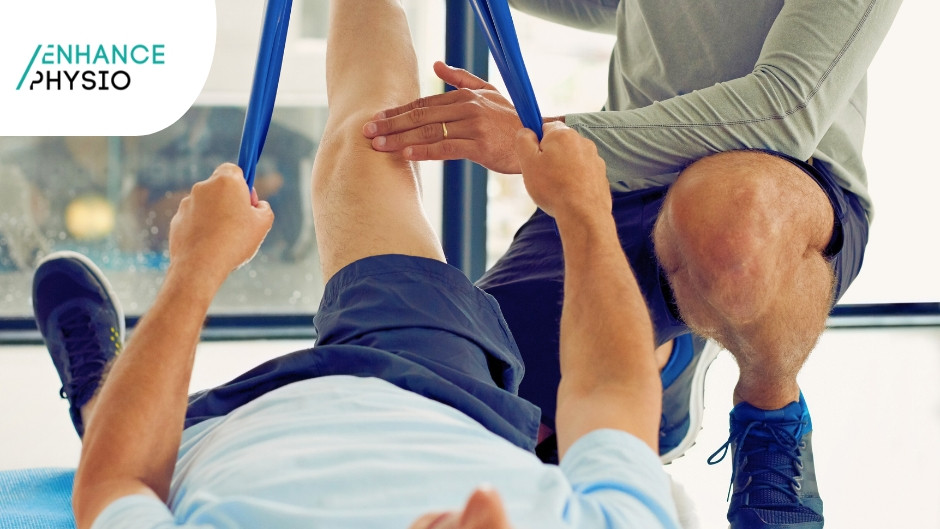Effective Strategies for Managing Pars Defect Through Physiotherapy
Enhance Physio is excited to share valuable insights into managing pars defect through physiotherapy, a condition that affects many individuals seeking relief from back pain and discomfort. The blog post highlights effective strategies and exercises designed to support recovery and improve mobility. With a focus on tailored physiotherapy solutions, Enhance Physio Wodonga aims to empower patients in Wodonga and surrounding areas to take control of their health journey. By integrating evidence-based practices, the clinic strives to provide comprehensive care that addresses the unique needs of each patient, ensuring optimal outcomes in managing this challenging condition.
Enhance Physio Provides Guidance on Pars Defect Management
Have you ever experienced pain or discomfort in your back that just won’t go away? If so, you might be one of the many individuals unknowingly affected by pars defect. But what exactly are pars defect, and how can physiotherapy Wodonga help you manage and overcome this condition?
The world of spinal health is as complex as it is essential, and understanding common conditions like pars defect is crucial for anyone grappling with back problems. Pars defect, a stress fracture in the vertebrae, can cause significant discomfort and limit mobility. Many people suffer in silence, unsure of the underlying causes or how to seek effective treatment.
Managing pars defect requires knowledge and a proper physiotherapy approach. With a treatment plan tailored by skilled physiotherapists, individuals can relieve symptoms and regain their quality of life.
What is pars defect?
Pars defect, also known as spondylolysis, are stress fractures in the pars interarticularis, a small segment of bone in the lumbar spine.
The defect is a stress fracture of the bones of the lower spine, which causes lower back pain. Rather than being in the core of the back, back pain frequently occurs on one side. When a pars defect fails to repair, it can progress to spondylolysis, a persistent pars fracture on both sides of the spine.
This increases the risk of a degenerative vertebra and other back issues in adulthood. The good news is that early detection and treatment procedures can avoid these back disorders.
Pars defect is most common in young athletes who participate in sports that involve repetitive hyperextension of the spine, such as gymnastics, football, and weightlifting.
Common symptoms of pars defect
-
- Pain in the lower back that may feel like a muscle strain
- Thigh and buttock pain.
- Tight muscles and discomfort in the lower back area.
- Muscle tightness, particularly in the hamstring muscles.
- Radiating leg pain, down one or both legs.
- Numbness, tingling, and weakness in your legs.
Physiotherapy is an effective treatment for pars defect, especially in the early stages. It can help to reduce pain, improve mobility, and prevent further injury.
Identifying pars defect with physiotherapy
Physiotherapists use a combination of assessment techniques to identify pars defects:
1. Subjective history: Detailed questioning about the onset, location, and nature of pain, as well as any aggravating or relieving factors, can provide valuable clues.
2. Physical examination: Palpation of the spine, range of motion testing, and specific orthopedic tests can help pinpoint the affected area and assess the severity of the defect.
3. Imaging studies: While not always necessary, imaging studies like X-rays, CT scans, or MRI scans can confirm the diagnosis and provide more detailed information about the extent of the fracture.
Managing pars defect with physiotherapy
Physiotherapy treatment for pars defect is tailored to the individual’s specific needs and the stage of the injury. Here are some common approaches:
1. Initial physiotherapy management
-
- Rest: Limiting activities that aggravate the pain is crucial for allowing the injured area to heal.
- Pain management: Modalities like ice, heat, or electrotherapy can help reduce pain and inflammation.
- Manual therapy: Gentle mobilisation techniques can improve joint mobility and reduce muscle tension.
2. Physiotherapy rehabilitation
-
- Core strengthening: Exercises targeting the core muscles, including the abdominals and back muscles, help stabilise the spine and reduce stress on the pars interarticularis.
- Flexibility exercises: Stretching exercises for the hamstrings and lower back can improve flexibility and reduce muscle tightness.
- Gradual return to activity: A carefully planned program of increasing activity levels helps prevent reinjury and promotes a full recovery.
3. Additional considerations
-
- Bracing: In some cases, a brace may be recommended to provide additional support and stability to the spine during the healing process.
- Surgical intervention: In severe cases where conservative treatment fails, surgery may be considered to stabilise the affected vertebrae.
Benefits of physiotherapy for pars defect
-
- Pain reduction: Physiotherapy helps reduce pain and discomfort associated with the pars defect.
- Improved function: By strengthening the core muscles and improving flexibility, physiotherapy helps restore normal movement patterns and function.
- Faster recovery: Early intervention with physiotherapy can accelerate the healing process and reduce the risk of complications.
- Prevention of recurrence: By addressing underlying factors and teaching proper movement and exercise techniques, physiotherapy can help prevent future episodes of pars defect.
Final thoughts
Identifying and managing pars defect with physiotherapy can be a game-changer for those experiencing discomfort and limitations. By understanding the condition and engaging in a personalised rehabilitation program, you’re not just aiming for symptom relief; you’re investing in a fuller, healthier life.
Remember, it’s all about restoring balance, strength, and function. Embrace the journey to recovery, and let physiotherapy empower you to reclaim your active lifestyle and enjoy every step along the way!
Book an appointment with one of our highly qualified physiotherapists at Enhance Physio before starting a rehabilitation program. We can advise you on the best course of action for your condition.
Take the First Step Towards Managing Pars Defect Today
 Wodonga is a vibrant regional city located in northeastern Victoria, known for its beautiful parks, rich history, and strong community spirit. The city serves as a hub for healthcare services, making it an ideal location for residents seeking quality physiotherapy care. Enhance Physio is proud to offer physiotherapy services specifically focused on identifying and managing pars defect within Wodonga and its surrounding suburbs, providing tailored support to help individuals regain their strength and mobility.
Wodonga is a vibrant regional city located in northeastern Victoria, known for its beautiful parks, rich history, and strong community spirit. The city serves as a hub for healthcare services, making it an ideal location for residents seeking quality physiotherapy care. Enhance Physio is proud to offer physiotherapy services specifically focused on identifying and managing pars defect within Wodonga and its surrounding suburbs, providing tailored support to help individuals regain their strength and mobility.For those struggling with pars defect, Enhance Physio invites you to explore our comprehensive physiotherapy services designed to help you manage this condition effectively. Our dedicated team is here to provide guidance tailored to your individual needs. Contact us today for a consultation and discover how our physiotherapist Wodonga can assist you in identifying and managing pars defect through personalised care.




















